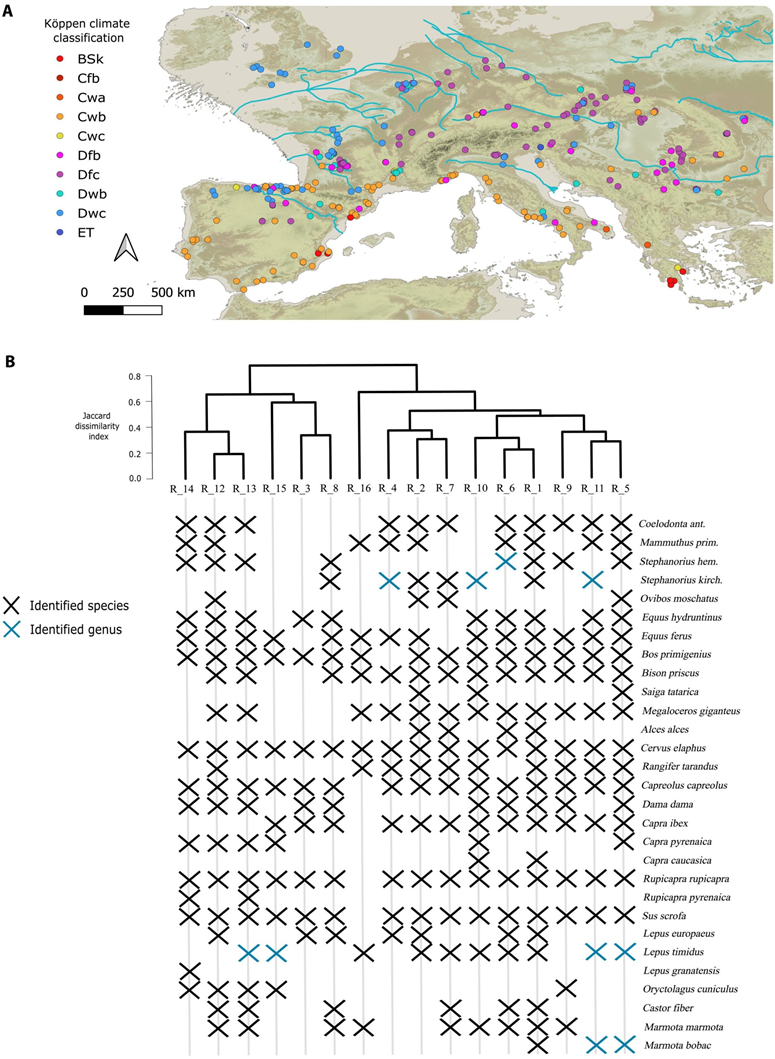? Neanderthals Vanishing When Homo Sapiens Emerged In Europe Was Coincidental – Are Herbivores The Answer

Jan Bartek - AncientPages.com - A team of evolutionary scientists has presented evidence the Neanderthals vanishing when Homo sapiens emerged in Europe may have been coincidental.
In a new study, scientists examined how the co-existence between the two species was affected by herbivore carrying capacity about 60,00 years ago.

Figure2: Photograph of the cast of the Neanderthal burial found at Kebara Cave, Israel, in 1983, and dated to 60,000 years before present.
In the study published in the journal Science Advances, the researchers elaborate on how "the study tests whether the regional differences in the timing of the Neanderthal disappearance, the spread patterns of H. sapiens, and the temporal overlap between both human species were affected by the carrying capacity (CC) of the ecosystems that they inhabit in Europe (34°S to 55°N; −11°E to 30°W).
The research team constructed a database containing the herbivore species that lived in Europe about 60,00 years ago and shared the land with the Neanderthals and Homo sapiens. next, scientists created a model and studied which European regions were affected by climate change and how much. In addition to this, scientists constructed a chronological timeline of the disappearance of Neanderthals in all the regions they had identified. The results allowed researchers to compare the available food resources, plants, and animals that ate plants for each region.

"It has been proposed that climate change and the arrival of modern humans in Europe affected the disappearance of Neanderthals due to their impact on trophic resources; however, it has remained challenging to quantify the effect of these factors.
By using Bayesian age models to derive the chronology of the European Middle to Upper Paleolithic transition, followed by a dynamic vegetation model that provides the Net Primary Productivity, and a macroecological model to compute herbivore abundance, we show that in continental regions where the ecosystem productivity was low or unstable, Neanderthals disappeared before or just after the arrival of Homo sapiens.

Climate and herbivore species during MIS3. (A) Köppen-Geiger climate classification in each archaeo-paleontological site included in this study. D, continental; C, temperate; E, polar; T, tundra; w, dry winter; f, no dry season; s, dry summer; a, hot summer; b, warm summer; c, cold summer. All climate variables were obtained from the work of Armstrong et al. (90) after bias correction (see the "Paleoclimate reconstruction and validation" section for details). (B) Cluster dendrogram with the classification of each herbivore paleocommunity in each region according to the Jaccard Dissimilarity Index (JDI). The figure depicts the herbivore species recovered in each region during MIS3. Credit: Science Advances (2023). DOI: 10.1126/sciadv.adi4099
In contrast, regions with high and stable productivity witnessed a prolonged coexistence between both species. The temporal overlap between Neanderthals and H. sapiens is significantly correlated with the carrying capacity of small- and medium-sized herbivores. These results suggest that herbivore abundance released the trophic pressure of the secondary consumers guild, which affected the coexistence likelihood between both human species," the scientists wrote in their paper.
The results of the study showed an overlap between where Neanderthals and Homo sapiens were living.
The interesting aspect of the study is that though both species lived in areas where it was easier to find food, the Neanderthals lived longest in regions where they co-existed with the Homo sapiens! The notion Homo sapiens caused the demise of the Neanderthals due to lack of food does not apply in this study, and the finding shows the reason for the decline and disappearance of the Neanderthals is still unknown.
The study was published in the journal Science Advances
Source: websites

